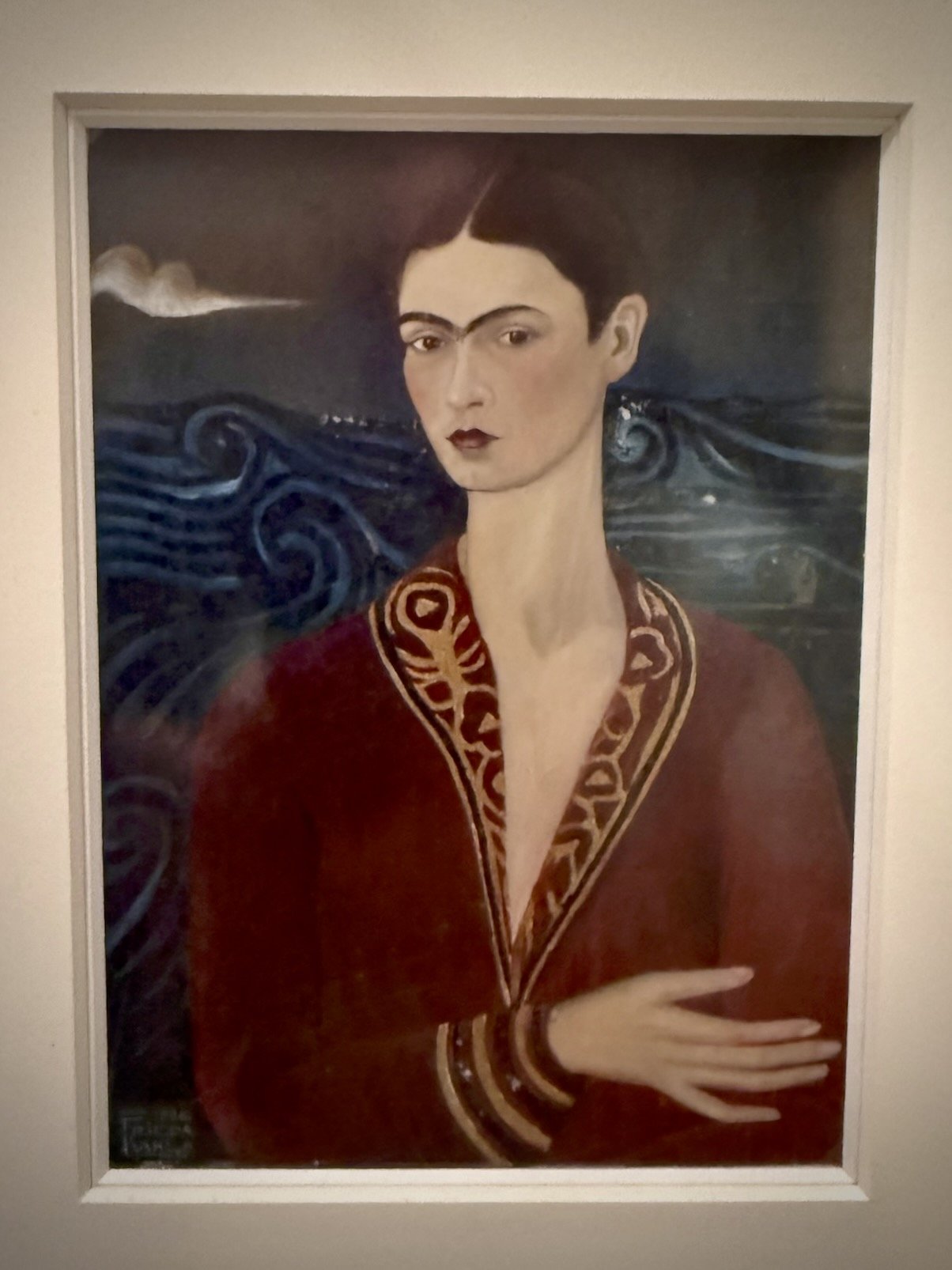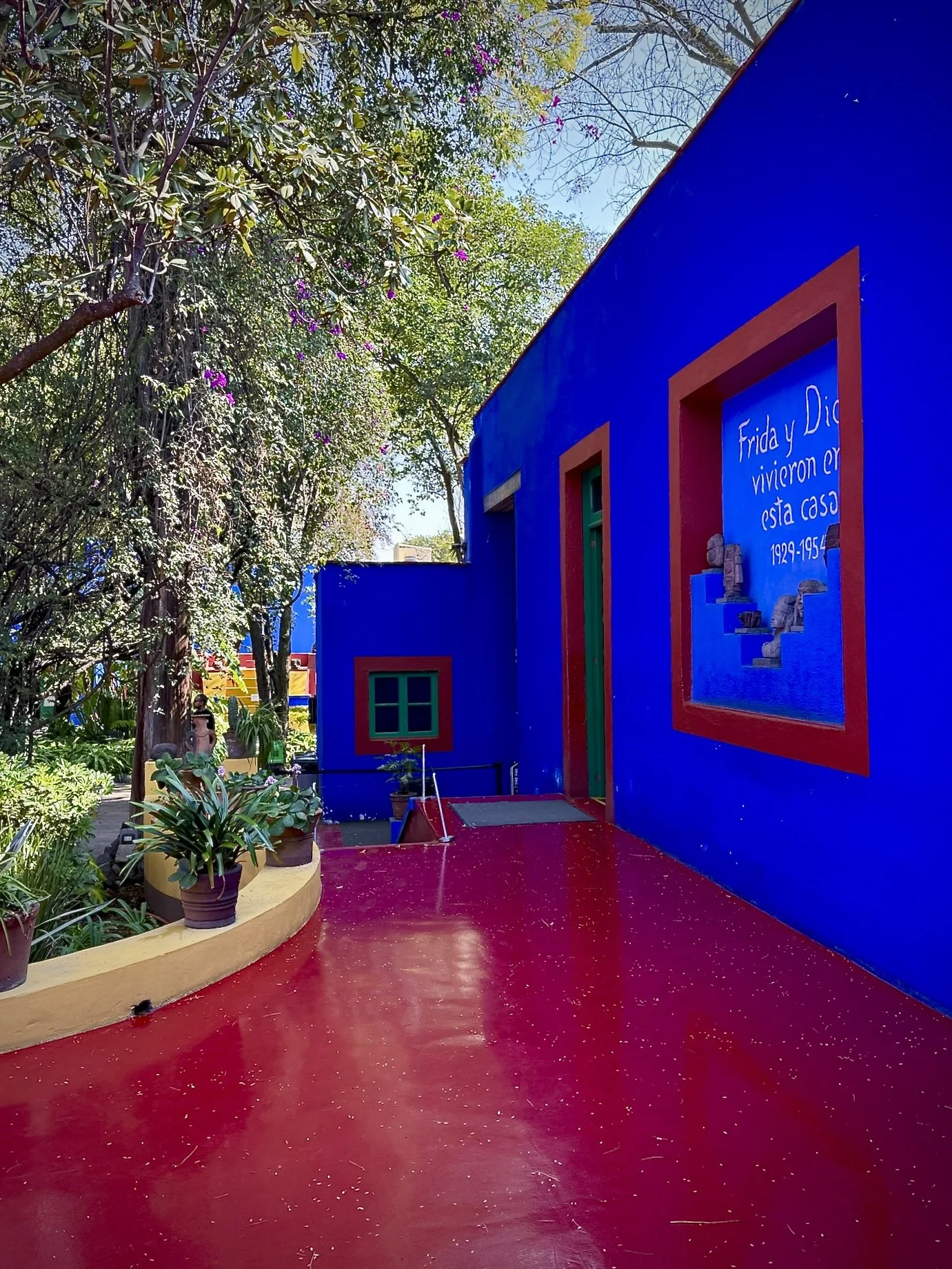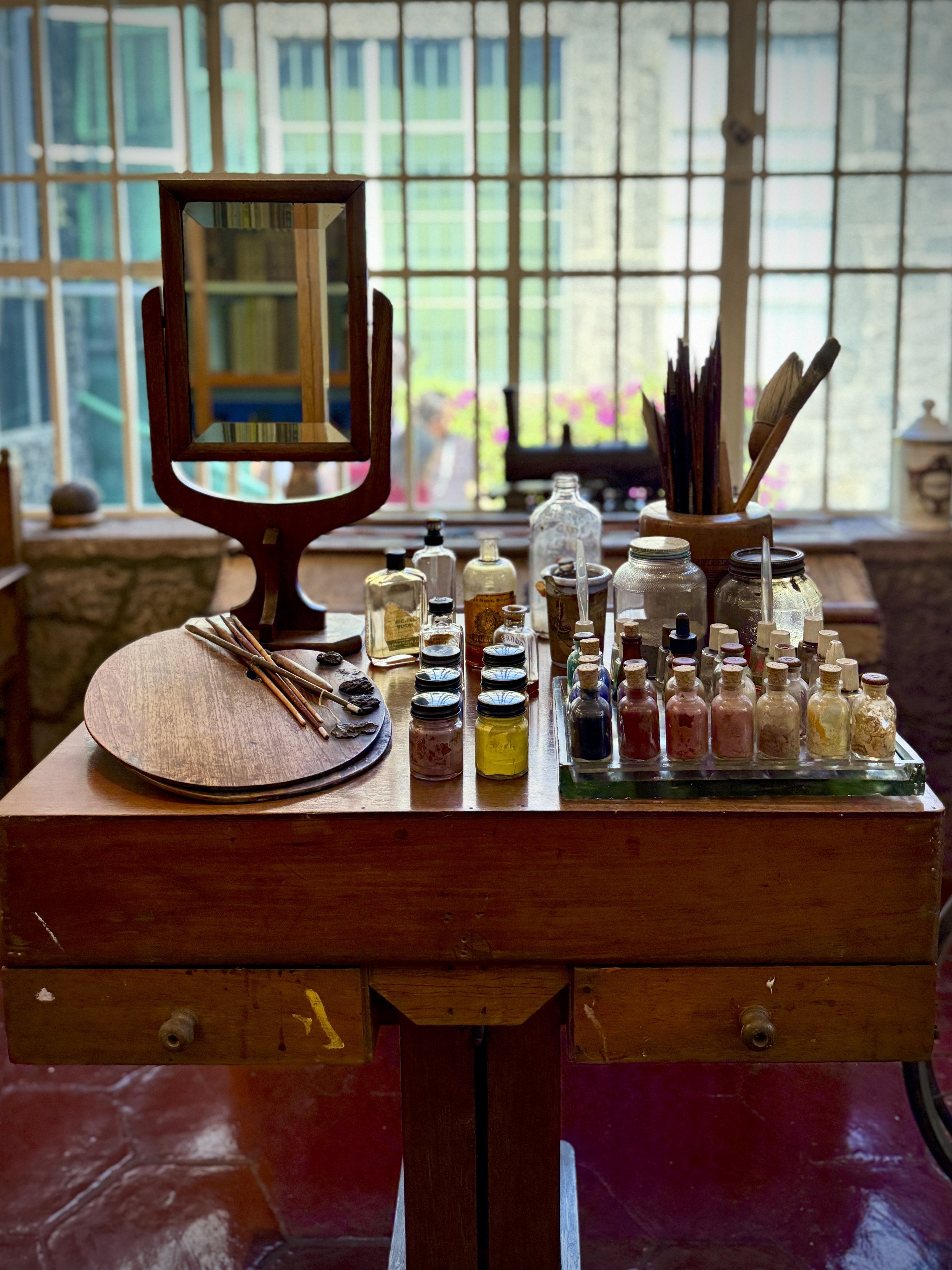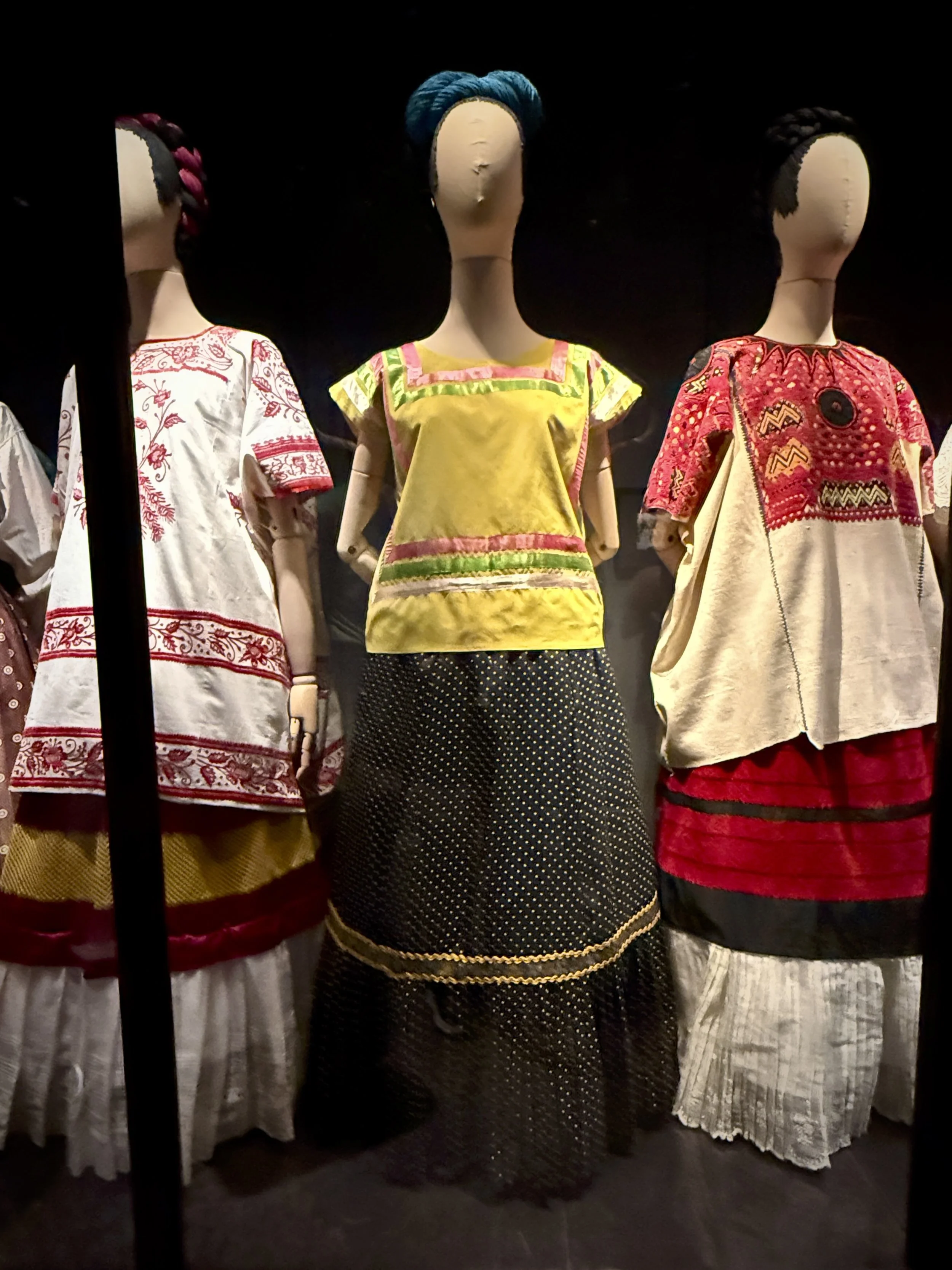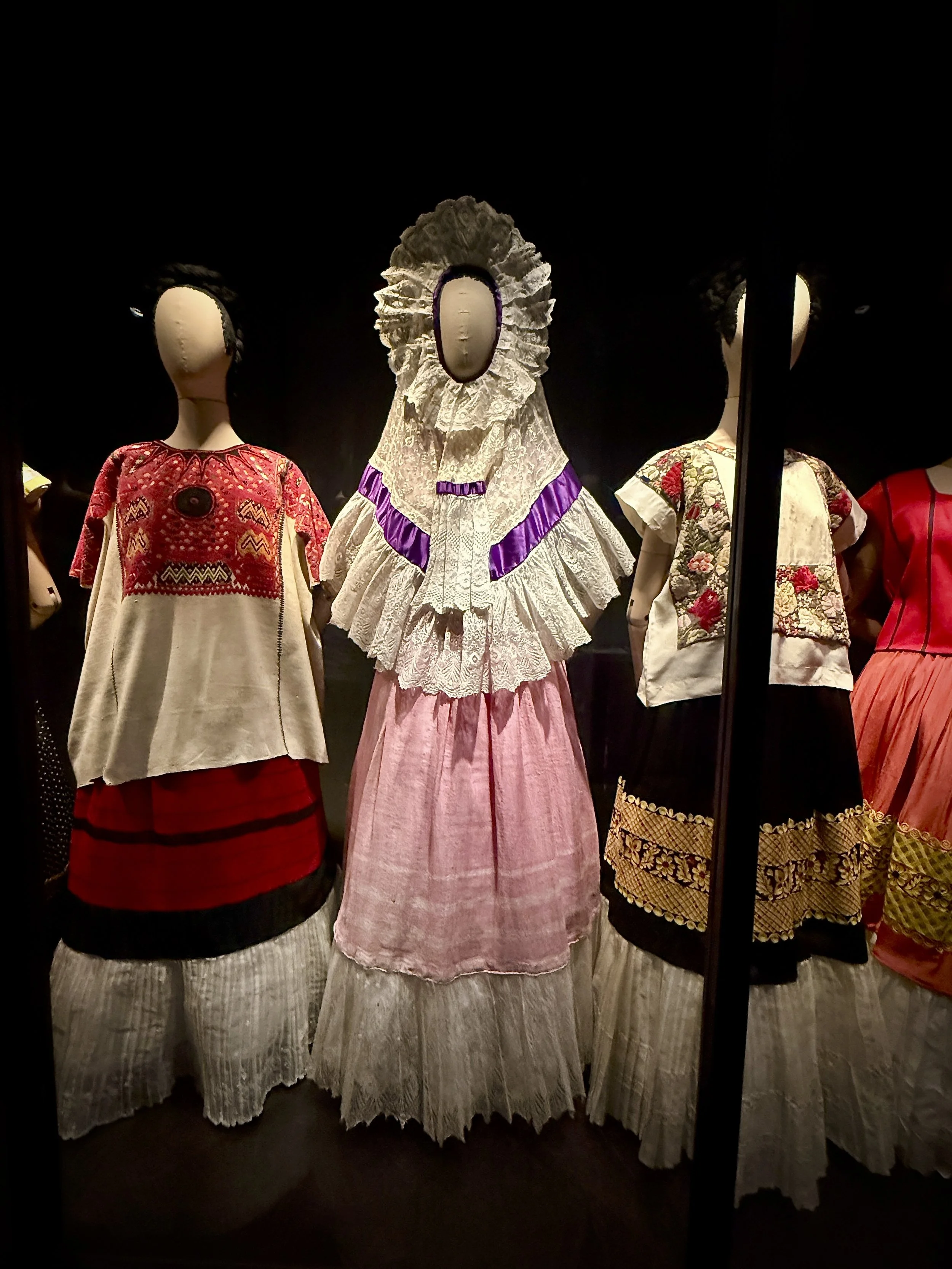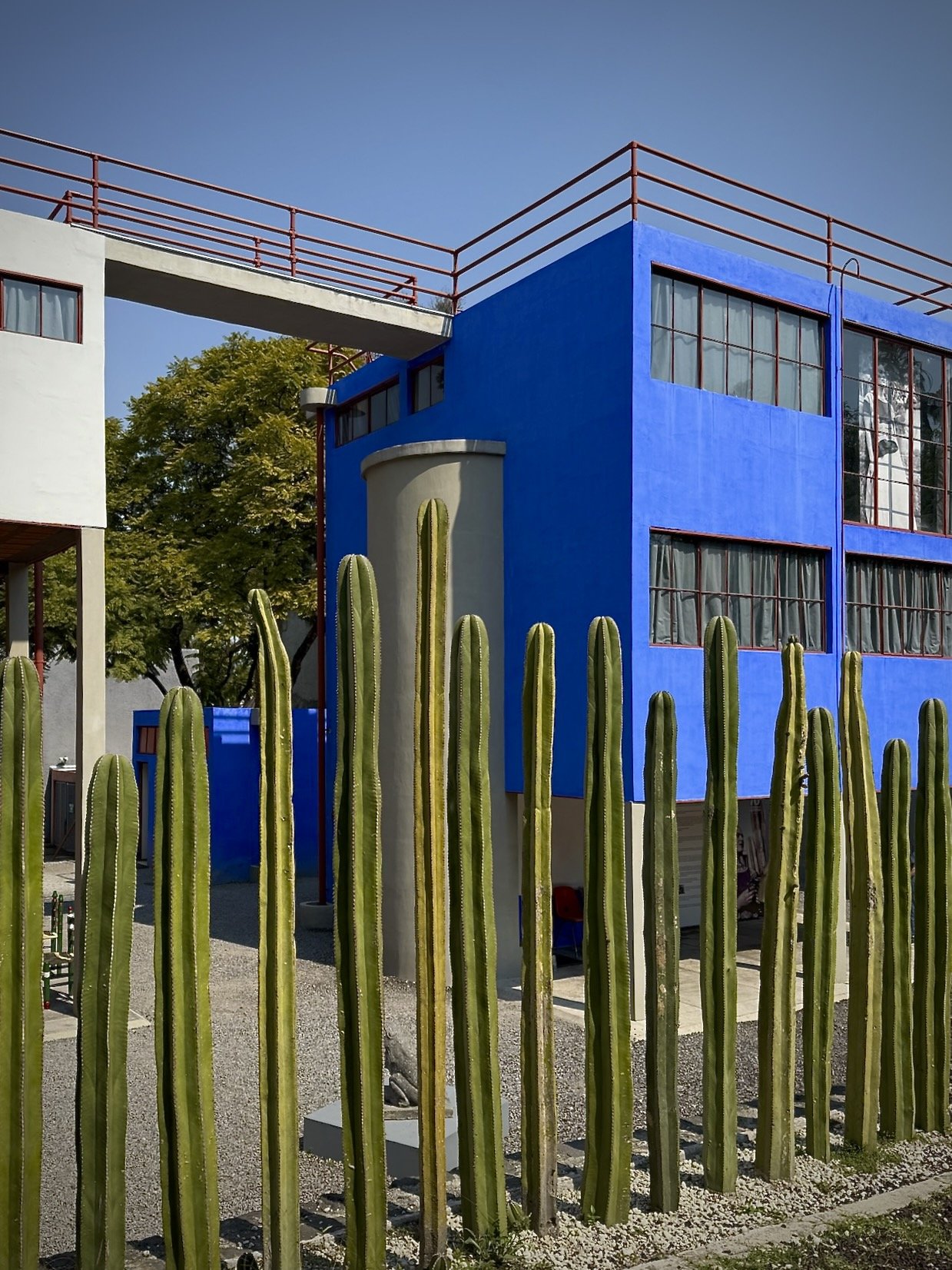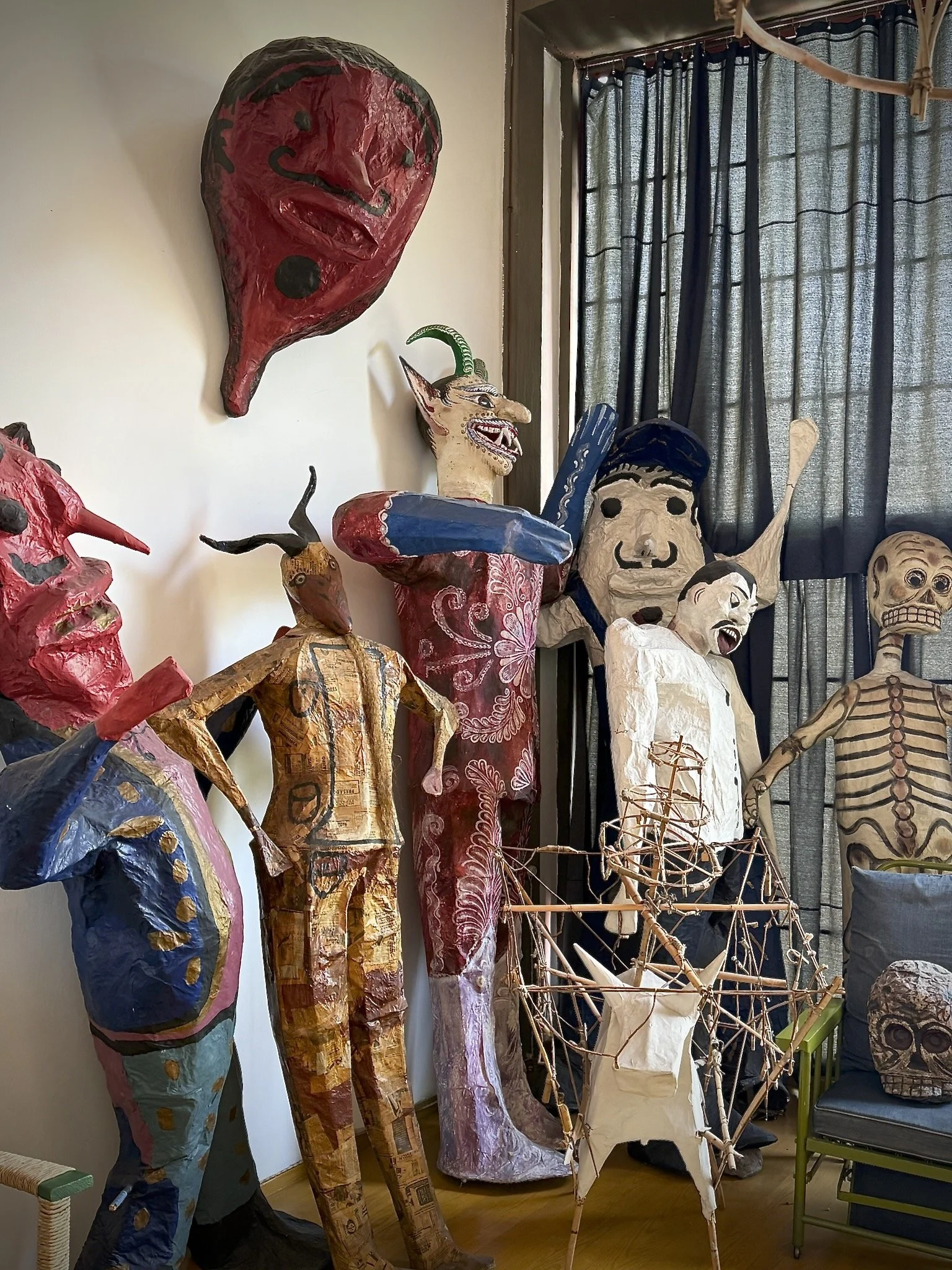Frida, Fashion, and the Dream That Followed Me Home
Reading time: About 6 minutes.
This isn’t quite a travelogue. It’s more like a dream I had while awake, somewhere in Coyoacán. Every word is true. Just not all of it happened in the usual way.
Photo by Mike Dryja.
We thought we knew Frida.
Before we left for Mexico City, Mike and I had watched the documentaries. Read the articles. Studied the eyebrows. We’d even revisited the Salma Hayek film, nodding sagely like people who understood—if not the woman herself—at least the idea of her.
We were prepared to be impressed. What we weren’t prepared for was to be followed.
The Square
Coyoacán doesn’t announce itself. It settles around you. The air feels rounder there, like it’s been softened by centuries of poets and pigeons. We arrived in the morning, and everything was the color of eggshells and sunlight.
Our guide greeted us like a librarian with a secret. She wore sunglasses and carried a three-ring notebook filled with Frida’s life: photographs, clippings, paintings, truths that had hardened into myth.
She didn’t speak loudly. She didn’t need to. The doves knew the story. The tree had heard it before. Even the bench seemed studied.
Frida’s biography unfolded in layers—bones broken, body betrayed, self painted again and again into being. She arrived slowly, in fragments. And as our guide spoke, I began to feel as though I wasn’t just learning about Frida. I was remembering her. As if I had known her all my life.
The Walk
The house, we were told, was close. We began walking.
But distance in Coyoacán is not measured in blocks. It’s measured in detours. In shifts of mood. In the time it takes to pass through a dream.
We went into a church that looked like it had once held confessions too strange for daylight. A market that sold tiny Fridas in plastic wrap. Mike bought four and a half pounds of dried beans. He meant to buy two. Before I could speak, they were in his hand. Then they were ours.
Maybe he was hungry. Maybe the beans asked.
I lost track of how long we’d been walking. My feet moved, but the rest of me floated slightly behind. It felt like the street was looping, like we were being watched. Not in a menacing way. More like someone was waiting to see if we’d give up.
And then, just when I had stopped looking—Frida blue. Impossible blue. Not painted, but conjured.
The house didn’t appear. It revealed itself.
Photo by Mike Dryja.
The Interior
Inside, the air thickened. Not with heat, but with memory.
It wasn’t huge, but it was heavy with presence. Everything had a heartbeat: the chairs, the walls, the kitchen tiles. I kept expecting a breeze to move through and rearrange the furniture.
Frida’s face was everywhere. But not out of vanity. Out of necessity. When no one sees you as you are, you build yourself into every surface until they have no choice.
In one room, her ashes waited inside an urn shaped sort of like a toad. It sat casually on a dresser, on top of a rectangular doily. There were treasured objects, hair combs, a mirror. The effect was unsettling, like walking into your grandmother’s house and finding revolution stored in a cookie jar.
But the room didn’t hold me long.
The Closet
I walked out of the main house, across a courtyard, and found the part of the house that hummed.
Her clothes.
There’s no good way to describe them. They were costumes, yes—but also armor. Performance. Devotion. Protest stitched in satin.
They were so full of life, it wouldn’t have surprised me if one shifted in its glass case—or simply walked out.
The long Tehuana dresses that hid her mismatched legs. The crown of lace that made her look like a queen made saint. The corsets, painted like lungs, like hearts, like flames. These weren’t garments meant to conceal. They didn’t hide her pain.
They dressed it up. Took it out dancing.
I didn’t want to take pictures. But I did. I didn’t want to speak. So I didn’t.
I stood very still, just in case the clothes had something to say.
One of them looked at me and said, You could be louder.
So true.
The Studio
From there, we drifted to the Diego Rivera studio across town, though I don’t remember exactly how. I know there were stairs. I remember a fence of totem pole cactuses. I remember light, cool and geometric.
Photo by Mike Dryja
It looked like a place that hosted modernist brunches. Palm Springs filtered through a Marxist lens.
It was lovely.
And it made me ache.
Because while the studio was designed for space, Frida’s life had been shaped by limits. Diego spilled across rooms. Frida painted from bed. He took up oxygen. She turned her breath into brushstrokes.
The stairs were narrow. I imagined her climbing them with her fused spine and fractured foot, carrying herself upstairs to witness whatever mural-sized passion Diego had unfurled that day.
It made my throat hurt.
Photo by Mike Dryja.
I wandered the studio. The papier mâché statues seemed infused with Diego’s spirit. Maybe Frida’s too. There were powders turned into brushstrokes. Gifts from famous friends. Diego had built a home in the world. Frida had built a world inside herself.
The Return
We flew back to Seattle carrying everything: memories of clothes that had watched us, beans wrapped in rustling plastic, the echo of doves.
At Customs, a polite agent flagged us. The beans, it turned out, were a problem.
We were escorted into a fluorescent-lit room that felt like purgatory for people with poorly declared legumes. The agent held up the package and asked, “Are these something you eat, or something you plant?”
Mike and I looked at each other.
“They’re something we eat,” we said.
She smiled, the way someone does when they’ve been living on the edge of absurdity for just a little too long. “Next time,” she said gently, “just say that up front.”
I nodded. I didn’t tell her that everything I carried back from Frida’s house was something I would eat, and also something I would plant.
After
Months later, I still see her.
Not just in pictures. In mirrors. In shadows. In the way I pause before choosing an outfit and wonder: Is this honest enough?
Frida doesn’t leave. She lingers.
And if you’re lucky, she rearranges a few things.
